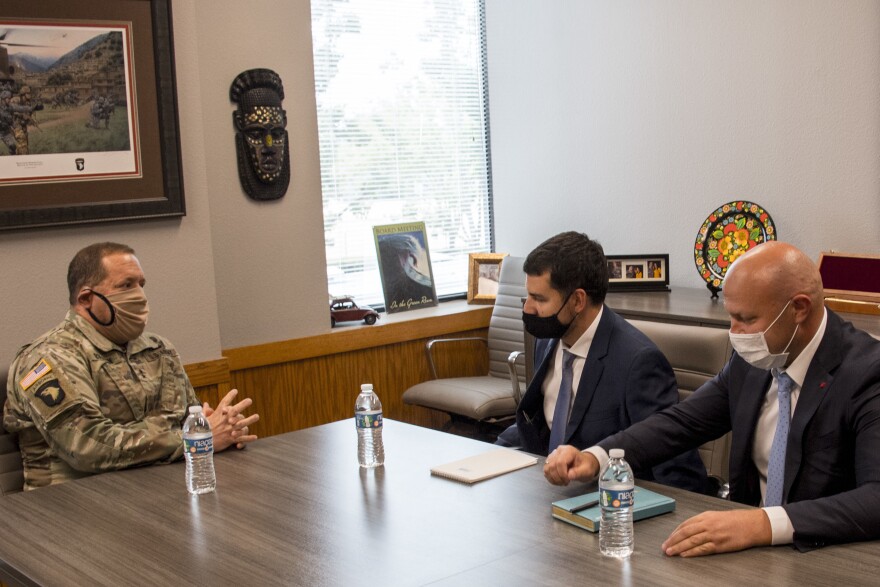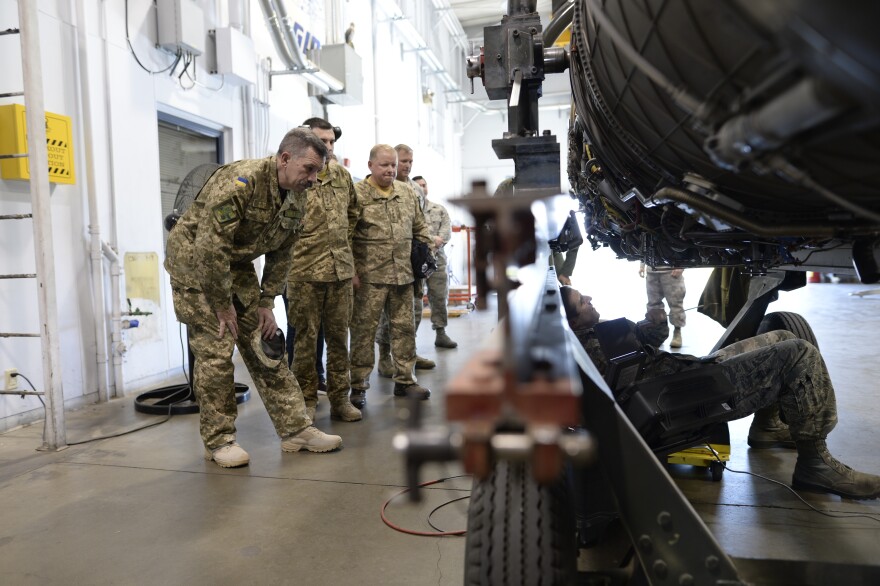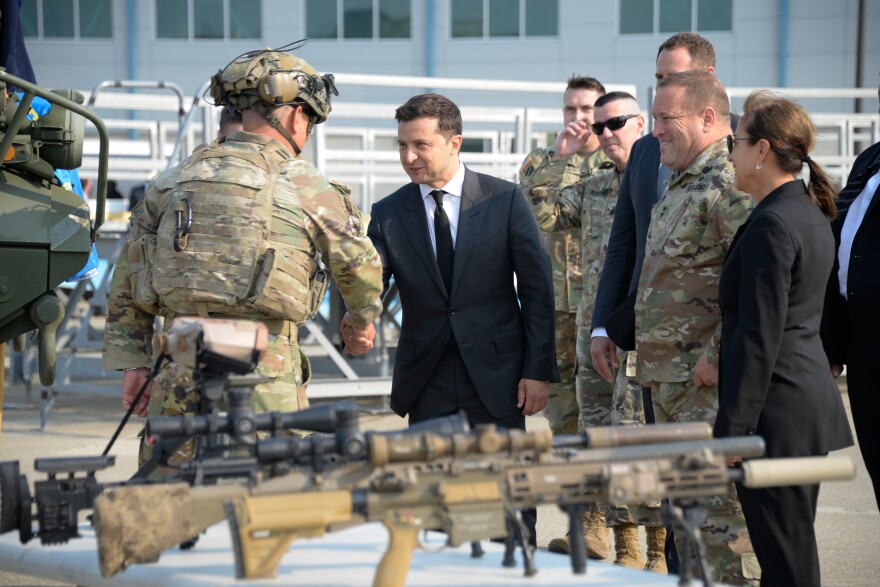Behind much of the Ukrainian military’s success against Russia is a little-known Department of Defense initiative built around state national guards.
The State Partnership Program has quietly become a powerful tool for diplomacy and modeling U.S. values around the world.
When the California National Guard’s adjutant general, Maj. Gen. David S. Baldwin, got a text from a Ukrainian colonel that Russia had begun invading, his first reaction was concern for his Ukrainian military friends.
“And then also a little bit of a calmer feeling, because I knew that these guys were ready for this fight, and that they were going to do well,“ Baldwin said.
Baldwin knew that because for nearly 30 years, California’s “citizen soldiers” have been helping Ukraine shape its military. And after Russia annexed Ukraine’s Crimean Peninsula in 2014, National Guards from several other states began pitching in.
They have taught the Ukrainians sniper skills, ambush tactics, how to fly fighter jets, sophisticated approaches to decision-making, better ways to approach maintenance and logistics, and how to use the Javelin missiles celebrated for destroying so many Russian tanks.
They also helped Ukraine build an asset Russia doesn’t have – a cadre of non-commissioned officers who know how to lead the front lines.
Troops from Ukraine and California have flown back and forth dozens of times for exercises and training. Baldwin lost count of his own visits to Ukraine after 40.

“Yes, we do increase actual combat capability of our partners and disaster response capability,” Baldwin said. “But what we really deliver is this notion of the United States is there to help your country."
The Ukrainians say that’s true.
“This partnership helps us to increase our combat capabilities and to increase morale of our spirit of our soldiers, and not only soldiers but all of the population,” said Major General Borys Kremenetskyi, the defense attache in Ukraine’s Washington embassy. “The efforts of California that have contributed to development of not only our military, but Ukraine as a independent state, are very difficult to overestimate.”
The nature of the State Partnership Program’s work is in a gray area, somewhere between the Pentagon and the State Department. It’s run by the National Guard Bureau, which falls under the Army and Air Force, but it’s not just about military training. It also models values like civilian control of the military and abiding by international laws for combatants.
The program now partners more than 90 nations with the National Guards of all 50 states, three territories, and the District of Columbia.
When the program began, though, it was aimed squarely at Eastern Europe. In 1991, as the remnants of the Soviet Union came apart, the United States saw an opportunity.
“The Department of Defense believed that we should reach out to these nations in Central and Eastern Europe who had been part of the Warsaw Pact," said John Finney, a senior strategic advisor with the National Guard Bureau, "to offer them the chance for security cooperation and to help them refashion their militaries which were, of course, developed under the Soviet Union."
Finney said the program sought to prepare those countries for more modern military engagements and eventual membership in NATO.
It was seen as such a success there that it was expanded into the Middle East, Africa, and Latin America. California, for example, also is partnered with Nigeria.
Other state National Guards have relationships in the Pacific, which could help counter Chinese influence, said Thomas Spoehr, Director of the Center for National Defense at the conservative Heritage Foundation.
The Foundation is hosting a program this month on the role of the Partnership Program.
“The United States, if (this is) done right, gets stronger partners, stronger allies, more capable allies who hopefully are able to defend themselves,” Spoehr said.
Beyond democracy-building, Spoehr said National Guard units get valuable training and practice at deploying that otherwise might be hard to come by. And it’s a recruiting tool, because the possibility of training overseas can make serving with the Guard more enticing.
The Pentagon budgets about $26 million a year for the program. Spoehr said it's hard to get a full accounting, in part because of the complexity of state Guard funding, but at what appears to be about a third of the cost of a modern fighter jet, it’s a bargain.

“For that amount of money, that's a lot of goodwill and and training that we're getting,” he said.
Finney said the Pentagon chose the National Guard for the mission because it felt that would seem less threatening to Russia. And Guard troops can build long-term relationships because – unlike regular active-duty troops – they often stay with the same unit for years.
Baldwin, the California Guard Adjutant General, said he has been working with Ukrainians since 1994, when a Ukrainian captain lived with the Baldwin family for two months while training with the Guard.
Now he and the California Guard are acting as a conduit between the Pentagon and Ukraine commanders on things like battlefield intelligence, weapon needs, and coordinating humanitarian aid and relief supplies.
“We can have very frank discussions about what they're asking for and what the U.S. can deliver or can't deliver,” he said. “And sometimes it softens the blow if we're giving them bad news if comes from me, rather than from the U.S. government. And then by the same token, I can also help encourage them and coach them on things that are in the realm of possibility that they can ask for.”
He said that shows the value of the program.
“When times get tough, like when the invasion started, the first people that Ukrainian leaders called was us, because they know us, and they trust us,” he said.
The second day of the invasion, Baldwin activated his Guard’s emergency headquarters, as if the state had experienced a major disaster. Because even though California wasn't under attack, its longtime partners – and friends – were.
This story was produced by the American Homefront Project, a public media collaboration that reports on American military life and veterans.Funding comes from the Corporation for Public Broadcasting.




